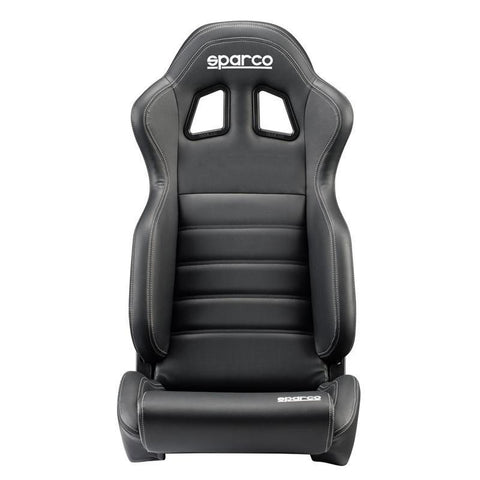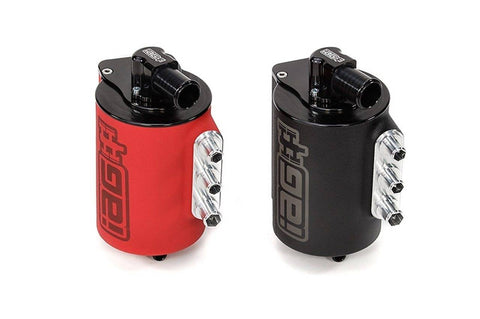If you enjoy working on your car, you likely have heard about caster and camber. You may have seen the terms on an alignment report from your mechanic or may have heard people talking about them.
But really...
What is camber on a car? And what is caster on a car?
If you aren’t sure what the terms mean, don’t worry, you aren’t alone. The good news is that you have almost certainly seen modified caster and/or camber on a vehicle.
What Is Caster?
Caster is the difference in angle between the steering axis and the true vertical axis of the wheel. As you know, your steering rack connects to your wheels to turn them. If it does not connect directly downward, the wheel will turn on a slightly different axis than vertical. Imagine a line through the center of your wheel perpendicular to the ground. Now imagine a line through your wheel through that follows the steering axis. This will match the angle of your bushings. Those two lines are how you can find the caster.
Positive caster means that the steering axis meets the ground in front of the true vertical line.
Negative caster is when the steering axis intersects the ground behind the vertical axis.
As another way to visualize caster, think about a motorcycle with a raked front fork. On some choppers, this can be significantly in front of the handlebars. That is extreme positive caster because the fork is turning on an axis other than vertical. Most vehicles have some amount of positive caster from the factory.
What is caster and camber in wheel alignment?
Camber is much easier to spot than caster. It is the tilt of the wheels as viewed from the front. Again, imagine a line through your wheel that is completely vertical and perpendicular to the ground. Now, imagine a second line through the center of the top of your wheel and the center of the bottom. If there is a difference between the two, that angle is the camber. A car with wheels tilting out (the top of the wheel is further out from the car than the bottom of the wheel) has positive camber. If the wheels tilt in (the top of the wheel is closer to the car than the bottom), then it has negative camber.
Camber may be used to distribute a load across different parts of the tire tread. Most vehicles have zero camber or close to it from the factory. However, sometimes they are modified to have greater camber for performance benefits. Improper camber will cause the tires to wear improperly and may adversely affect handling.
Caster vs Camber: What Do They Do?
From a performance perspective, caster helps ensure good stability when driving. It also promotes steering wheel self-centering. When you are driving along, your wheels tend to straighten out. This is caused, in part, by positive caster. If the steering axis were completely vertical, the wheels would be more prone to spinning like the wheels on a shopping cart. Negative camber can help your vehicle with cornering. As you take a turn, the vehicle wants to push outward due to centrifugal force. Having negative camber allows the wheels to push back slightly against that force. This enables your vehicle to take more aggressive turns. In some cases, positive camber can be beneficial for taking on a load because the camber tends to naturally become more negative when weighed down. Aligning the wheels to have slight positive camber can help compensate for this effect. Of course, this is not often relevant for cars on the track.
Zero camber is better for acceleration because it puts more tire surface area on the road. Racing teams tend to adjust their camber and caster to match the needs of specifics tracks and events. Negative camber can be very helpful on a track with tight corners. However, it will be a liability on a track with long straightaways.
It is worth noting that adjustments to caster, camber or both for performance are usually subtle, sometimes not even noticeable. If you see a car with very obvious negative camber, this is usually done for style rather than performance. Whether or not it looks cool is up to you.
Making Adjustments
Now that you can confidently answer "what is caster and camber?" you are ready to make some adjustments. Wheel alignment can be changed slightly with the OEM parts. Wheels are designed so that you can realign them when putting on new tires. If you want to push things a little further, you will need some special parts.
With alignment components and accessories from MAPerformance, you’ll have everything you need to adjust your wheel alignment for superior performance. We have parts such as adjustable lower control arms, sway bars, camber bolts and complete kits for alignment adjustment. These are especially important if you want to adjust your caster and camber for performance purposes.
Experimenting with your project car can help you find the right alignment for your driving style. You may be surprised what a difference changing caster or camber can make.
Check out these relevant links:




Comments (0)
There are no comments for this article. Be the first one to leave a message!